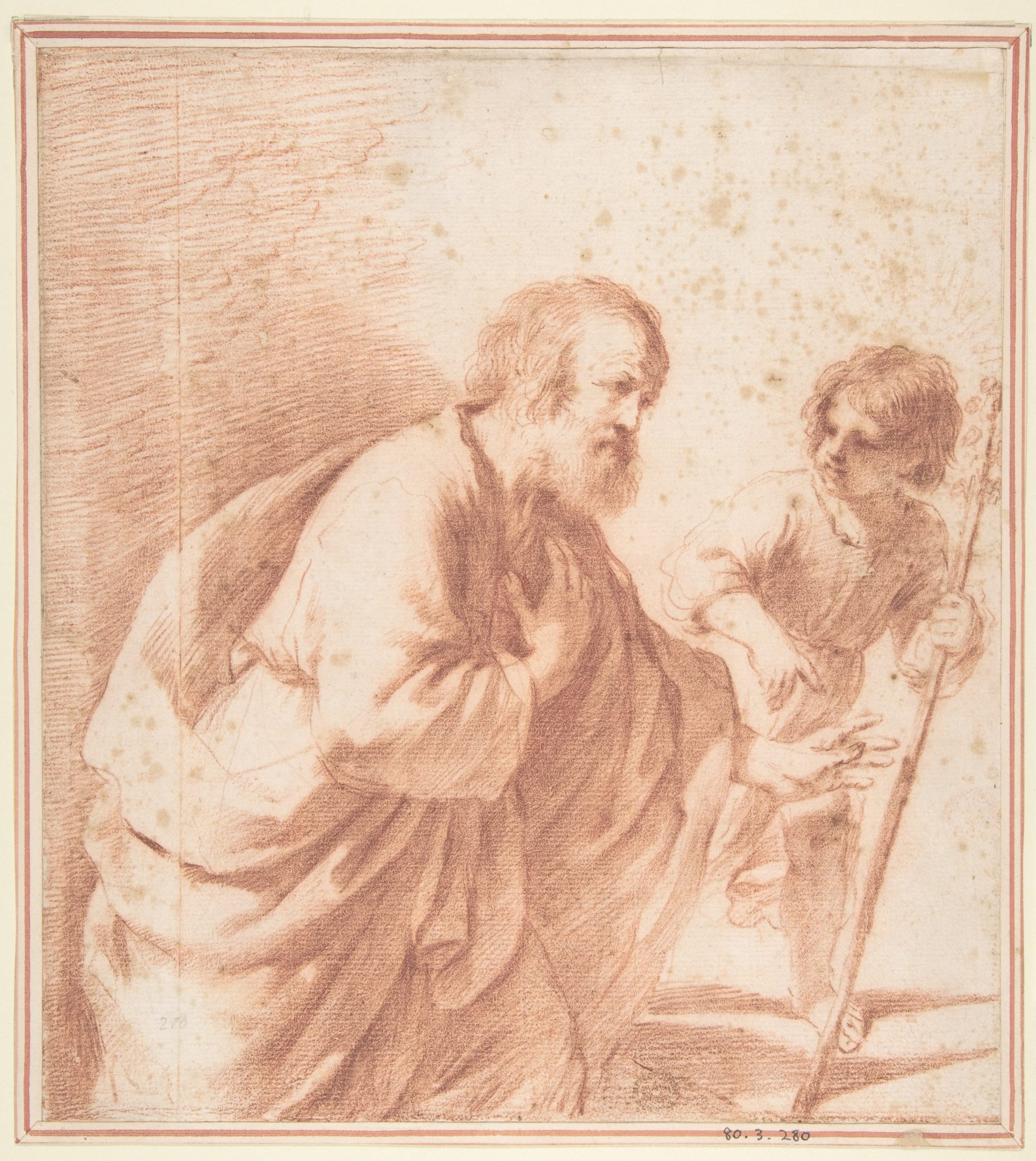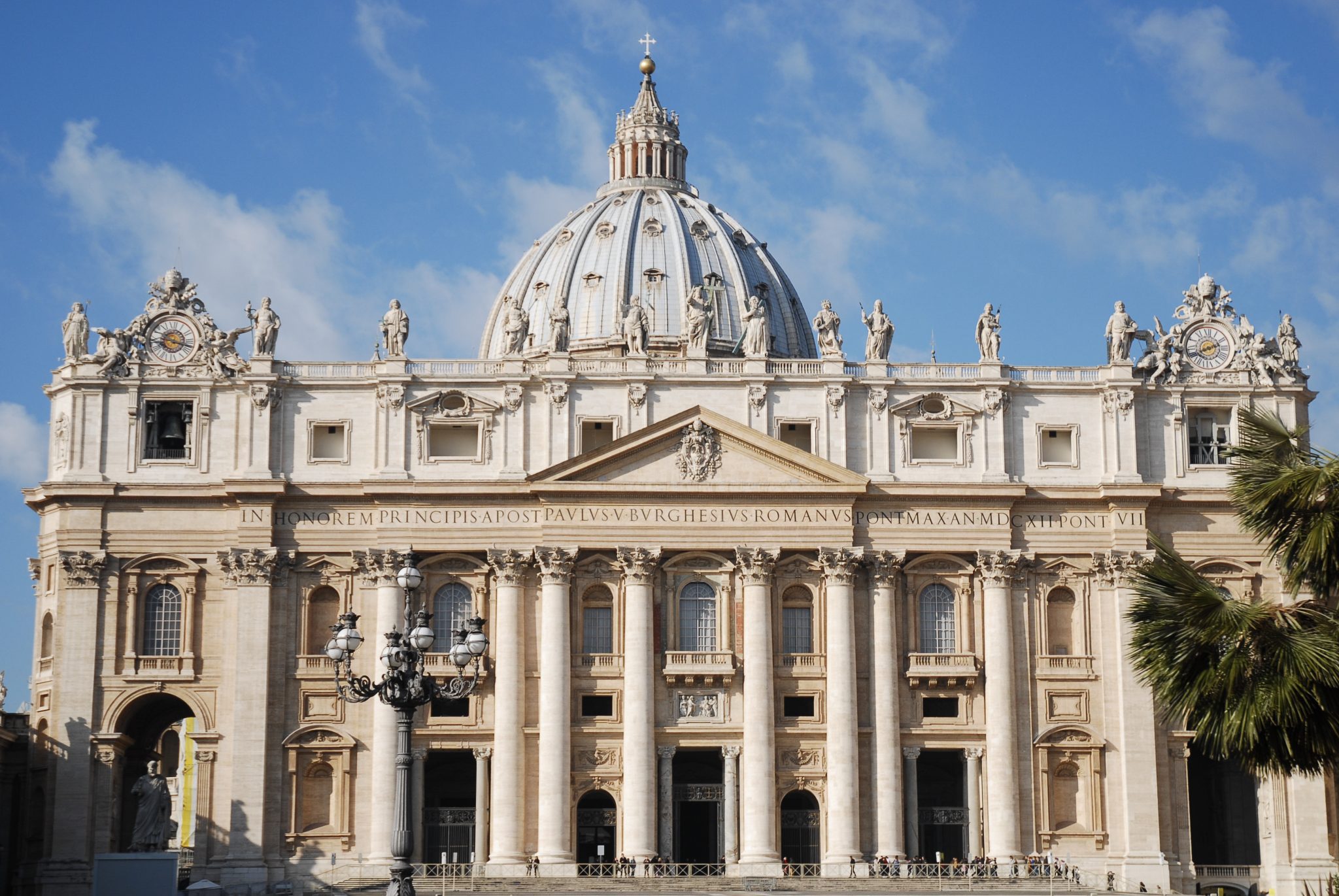St. Joseph and the Lily
Many Catholic churches have altars (or at least statues) on either side of the main altar, dedicated to St. Joseph and to the Blessed Virgin Mary. Take a close look at the St. Joseph statue the next time you’re in church and chances are, you’ll notice him holding a wooden stick out of which flowers are blooming. A quick look through the Gospels reveals no reference to any kind of an incident involving St. Joseph and a wooden stick blooming flowers! So where does this image come from? First of all, the story of the wooden stick and the blooming flowers  goes like this:
goes like this:
After Joachim and Anna, Mary’s parents, presented Mary in the Temple when she was 3 years of age, they allowed her to remain there as a temple virgin dedicated to God’s service. When Mary was on the verge of womanhood, the high priest announced that it was time for all of the temple virgins of that age to return home so that marriages could be arranged for them. Mary, however, said that she could not do this since her parents had dedicated her to the service of the Lord and that she herself had made a vow of virginity to God. When the high priest sought guidance from God, a loud voice called forth all of the men of the House of David who had not taken a wife, instructing them to come to the Temple and to bring a branch to lay on the altar. The voice said that one of the branches would bloom forth with flowers and that the Holy Spirit, in the form of a dove, would land upon the branch. Joseph was one of the men who came and when he placed his branch on the altar, it immediately bloomed into flowers and a dove descended from heaven and landed on it, thus revealing that Joseph was to take the virgin Mary as his spouse.
Nice story, but, if it’s not in Scripture, then where does it come from?
It turns out that this story can be traced to several apocryphal (non-canonical) gospels: the Protoevangelium of James and the Gospel of Pseudo-Matthew. In both of these accounts, a dove flies forth from the rod (stick) belonging to Joseph, indicating that he is to be the spouse of Mary. A medieval (13th or 14th century) compilation of stories of the saints, The Golden Legend, tells the tale of the marriage of the Virgin, drawing from these apocryphal gospels and providing us with the version that describes flowers blooming forth from the stick rather than a dove. Over the centuries, this scene has been depicted in sacred art, both paintings and sculptures, showing St. Joseph holding a staff, stick, or rod, from which flowers are blooming.
Catholics are not bound to accept this story as revealed truth, however, the legend captures our imaginations and expresses our belief that Mary and Joseph were indeed chosen by God for their special roles as the mother and foster-father of Jesus.
https://www.catholicculture.org/culture/liturgicalyear/activities/view.cfm?id=1050
St. Joseph’s Night
It was a widespread custom in past centuries for newly wed couples to spend the first night of matrimony (St. Joseph’s Night) in abstinence and to perform some devotion in honor of Saint Joseph that he might bless their marriage.
Fires in Honor of St. Joseph
In the region of Valencia on the east coast of Spain a strange and interesting tradition developed — the burning of fires in honor of Saint Joseph. It is said to have been started by the carpenters in past centuries, when they cleaned their workshops before March 19 and burned all the litter on the evening of their patron’s feast. Today committees are established which collect and exhibit at street crossings structures made of wood by boys and men during the weeks before the feast. These structures represent houses, figures, scenes, many of them symbolic of some political event of the past year. They are admired and judged by the people, and on the eve of Saint Joseph’s Day the best one receives a prize and is put aside. All the others are burned in joyful bonfires. Music, dancing, and fireworks (traca) are a part of this celebration in honor of Saint Joseph.
The Burial of Winter
In some parts of Italy ancient nature lore rites are still performed on Saint Joseph’s Day, the “burial of winter” for instance, which is done by sawing a symbolic figure (scega vecchia) in two. In central Europe the day is celebrated by farmers as the beginning of spring. They light candles in honor of the Saint, put little shrines with his picture in their gardens and orchards, and have their fields blessed by the priest.

